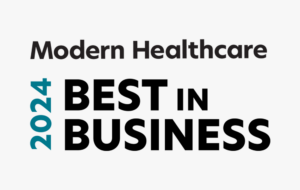By Kali Durgampudi, Forbes Technology Council, April 10, 2024
Healthcare is big business in the U.S.: in 2021, healthcare spending reached nearly $4.3 trillion, accounting for more than 18% of GDP or an average of almost $13,000 per capita. This is due to a range of factors such as prescription drug costs, professional salaries and cutting-edge technology. But a large portion of the costs can be attributed to administrative tasks—in particular, billing or revenue cycle management (RCM).
The RCM process is incredibly complex and burdensome. Filing claims and collecting payment for services is time-consuming and tedious, with a single transaction often involving dozens of process steps or software systems. One recent study found that physician practices spent about $30 billion each year on billing costs alone.
How can we reduce this burden? Automation technologies such as robotic process automation (RPA) are transforming the healthcare industry, especially in terms of efficiency and efficacy. As the CEO of a leading provider of smart automation solutions to the healthcare and emergency management industries, here is how to use RPA to undertake a variety of tasks can make it an invaluable tool in leading to better healthcare outcomes.
Opportunities for automation
RCM is perfect for automation because it consists of so many repetitive tasks: insurance verification, claim processing and prior authorization determination, just to name a few. This is exactly what automation does: it systematizes routine workflows without human intervention, which in the case of healthcare billing means lifting the burden on administrative teams, reducing waste, and improving efficiency and quality of care in the process.
Healthcare providers should look to use an RPA system to streamline workflows across various clinical and administrative systems. They can check the status of claims, secure authorizations, schedule appointments and collect on large-volume payers and complex claims. They can also manage data stored in disparate systems and improve patient communications by sending notifications and follow-ups. All of this happens 24/7 in the background.
Capture lost revenue
The inefficiency and complexity of RCM systems means that healthcare providers often don’t collect all the revenue they should. One study found that hospitals fail to collect as much as $62,000 in revenue per bed due to inefficient billing processes, missed reimbursements and inadequate RCM. Add to that the thousands of hours that employees spend processing bills and we, as an industry have a huge opportunity for cost savings. Research by McKinsey suggests that companies could achieve annual run-rate cost efficiencies of 20-35% by automating 50-70% of their tasks.
A well-implemented RPA system should reduce manual labor and operate around the clock. RPA systems lower operational costs and reduce claim denials and costly mistakes caused by human error. The result: more accurate billing and coding, reduced operational costs for providers and lower fees for patients.
In addition to lowering costs for patients, RPA should be used to free up healthcare staff to dedicate more time to patient care and communication. With automation, providers can repurpose the money they save on RCM processes toward clinical needs and patient care.
It’s important to keep in mind that the goal of implementing RPA is not to eliminate jobs, but to free up workers for more complex, satisfying and better-paying positions. In my experience, once employees understand what RPA can do, they appreciate not having to perform boring, repetitive tasks that nobody likes to do.
While automation can be a vital tool in reshaping the healthcare landscape, it should be viewed as a stepping stone to more advanced technologies such as predictive and Gen AI. But by leveraging automation, healthcare organizations can not only thrive financially but also deliver superior patient care, ultimately contributing to a more efficient, reliable and patient-friendly healthcare system.



